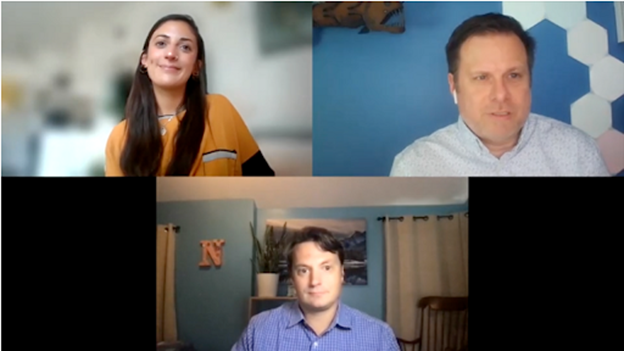|
Getting your Trinity Audio player ready...
|
We recently spoke with Brett Robinson and Sabrina Mohsenin from National Public Media (NPR’s sponsorship subsidiary) about their unique foray into programmatic revenue. The recording of this discussion is available on Beeler.Tech in our First Impressions section (available to publishers only).

What makes the NPR story so compelling is that until a couple of years ago, they strategically decided not to take up programmatic advertising. What inventory they had that went unsold was used for self-promotional purposes only. While inconceivable to most publishers to not monetize every impression, there is a lesson for all publishers from NPR’s journey.
As a non-profit, NPR operates with stricter guidelines than most publishers have to. “We have these really strict creative guidelines which stem from the radio,” says Brett Robinson, VP of Ad Operations. “On the radio side as a nonprofit, the FCC actually governs what you can and can’t say in an ad or sponsorship. We apply a version of that approach to our digital business.”
That approach includes an understanding that the ads NPRs serve reflect on their brand as a publisher. Advertising is a core part of the user experience. It’s that respect for their own brand coupled with their respect for their users, which other publishers can learn from.
Programmatic Journey
NPR dabbled with programmatic early on in a unique way. “I think if you think of real-time bidding as this firehose of demand pouring onto your site,” says Robinson. “You’re blocking and deflecting things that you don’t want, whether that’s categories, maybe gambling or vaping or something like that, or specific brands that might be in the news that you might not want on your site at that point. Otherwise, most people are defaulting to everything’s coming and you’re choosing what you don’t want. Think of flipping that completely on its head.
We were doing the opposite where by default, every single banner was defaulted to not being allowed on our site. We would have people go in and review banner by banner, one by one, read the copy, and decide if it was appropriate for NPR.
Brett Robinson, VP of Ad Operations, National Public Media
Several factors started putting pressure on this manual approach and so Brett and Sabrina went to management with a plan to address their concerns about security, ad quality, and brand suitability. “We were actually really lucky to have had GeoEdge on our side before this call,” says Sabrina Mohsenin, Ad Operations and Programmatic Ad Technology Manager for NPR. “They helped us understand how we could address each one of our concerns using their tool.”
Present Day
Which brings us to where things stand today: NPR’s programmatic revenue has grown more than 10x in the last two years. Their ad quality QA processes to defend against malicious, intrusive, and off-brand advertising have been streamlined with GeoEdge’s AdWatch to the point that NPR is exploring expanding their programmatic partners.
All of this without a significant increase in user complaints which Robinson considers, “the sign of good programmatic”.
So what can we all learn from this?
- Respect your users. Respect yourself. It’s possible the seismic shifts coming to our industry through regulation and major technological changes will force you to take this approach…or you can simply start to adopt it now. The only way to futureproof your business as a publisher is to establish a strong relationship with your audience and establish an understood value exchange. That is hard to do if you don’t treat your users well and establish your own brand as secure and safe.
- Increasing quality will equate to revenue upside and not just a necessary cost. If you believe the first point, it only follows that you believe this as well. Without diving into all the fundamental changes coming to digital advertising, it’s understood that both advertisers and users are going to move to higher-quality experiences. It’s imperative to deliver engaging, relevant advertising that works for the advertiser, the user and for your brand as a publisher. The ability to address security, ad quality, and brand suitability issues will be a differentiator in the marketplace.
- Set-and-Forget isn’t here yet. It’s premature to not have your own eyes on what is running on your site. Alongside GeoEdge’s automated tools, NPR uses GeoEdge’s AdWatch to review all the programmatic ads running on their properties. They do this because the line of what is acceptable is a judgment call THEY want to ultimately make. They are not alone. In a recent Digiday Ebook, The State of Ad Quality, 82% of publishers have manual elements of their ad quality approach, with 52% using a hybrid approach. 35% believe that both manual and automated approaches will be an equal part of their strategy.
The level of caution NPR takes to protect its users and its brand may for many publishers seem extreme, but NPR is not alone in the belief that a more hands-on approach is what is required. Publishers should have the ability to define their own rules and criteria about what is and isn’t allowed on their sites. It’s then up to their technology partners to enforce those rules efficiently and effectively. That’s not set-and-forget – that’s simply paying attention.
Rob Beeler
Founder and CEO, Beeler.Tech
Beeler.Tech was founded by Rob Beeler and focuses on connecting people, creating conversations, and helping bring efficiency to digital media and ad tech. Beeler.Tech is the platform to facilitate connections and develop content and events based on topics not properly served through traditional channels.


